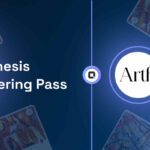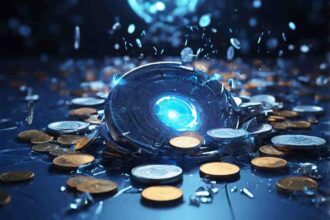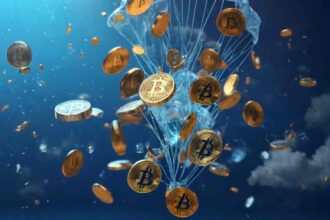Peer-to-peer-based sharing aka the sharing economy is the concept that lets individuals or service providers monetize assets or infrastructure that are not being fully utilized. It isn’t a new concept per se. This is what Uber, Airbnb, Hubble and even Tinder have in common. But you know the great explosion of companies embracing this model begs the questions:
- Do we still need a centralized middle-person like Amazon or Uber?
- Can the ethos of decentralization extend to tangible infrastructure for individuals to benefit from this sharing economy model?
- Is there a possibility to create a decentralized marketplace of underutilized resources such as computing power and data storage?
DePINs which stands for Decentralized Physical Infrastructure Networks can be defined as the blockchain applications which make use of communities who are token incentivized to decentralize real-world infrastructure. This infrastructure can be anything ranging from WiFi hotspots to energy distribution in solar-powered home batteries to e-commerce.
This article explores this avant-garde narrative around cryptocurrencies and blockchain in the context of Decentralized Physical Infrastructure Networks (DePINs).
What Are Decentralized Physical Infrastructure Networks (DePINs)?
DePINs are an emerging trend within blockchain that attempt to decentralize physical infrastructure for personal use. For instance, think of your WiFi internet or your storage anything that is unutilized you can offer this to people who need it at a lower cost.
If we consider the genius brains then according to a BlockSys’23 paper, the decentralized physical infrastructure networks are considered to be taking the “Sharing Economy” one step further as it disrupts the existing IoT business models and enables Web3 communities to build innovative, machine-driven and decentralized IoT networks and applications.
Well the idea is to use say 5% of a computer’s processing power and connect it to 5% of thousands of other similar computers to do calculations and monetize this collective computing power so that users like us could contribute seamlessly while doing resource-intensive work and earning rewards. This basically is the DePIN narrative.
Nevertheless, this web3 trend may have been used under different names such as EdgeFi, Proof of Physical Work (PoPw) or Token Incentivized Physical Networks (TIPIN).
How Does Decentralization of Physical Networks Even Happen?
Trust me it isn’t that tough to understand and the key idea is to overturn the traditional model. You know DePIN in actuality addresses the problem of monopolistic control of traditional infrastructure by large corporations. This centralization leads to stifling competition and innovation not just that it also results in subpar consumer experiences.
Web3 companies try to outsource the “building and maintaining” infrastructure process to a token incentivized army of volunteers and monetize later once the coverage rate is high enough. So this is the same liquidity incentive principle in other web3 sectors such as DeFi, yield farming or play-to-earn.
Thus in a nutshell DePIN solves the above mentioned issue by utilizing token incentives, smart contracts, decentralization and participatory governance mechanisms of blockchains. This means no single company controls the network and everyone participates in building and maintaining the network. People earn “tokens” for contributing to the network like sharing their internet or storage.
The Working of DePIN
To understand how DePIN works, we shall consider the example of a decentralized “Google Maps” which in reality is a Solana project called “Hivemapper”. Such a DePIN project functions by integrating real-world physical devices (i.e. dash cams installed by users in their cars) that generate and share data (i.e. live footage).
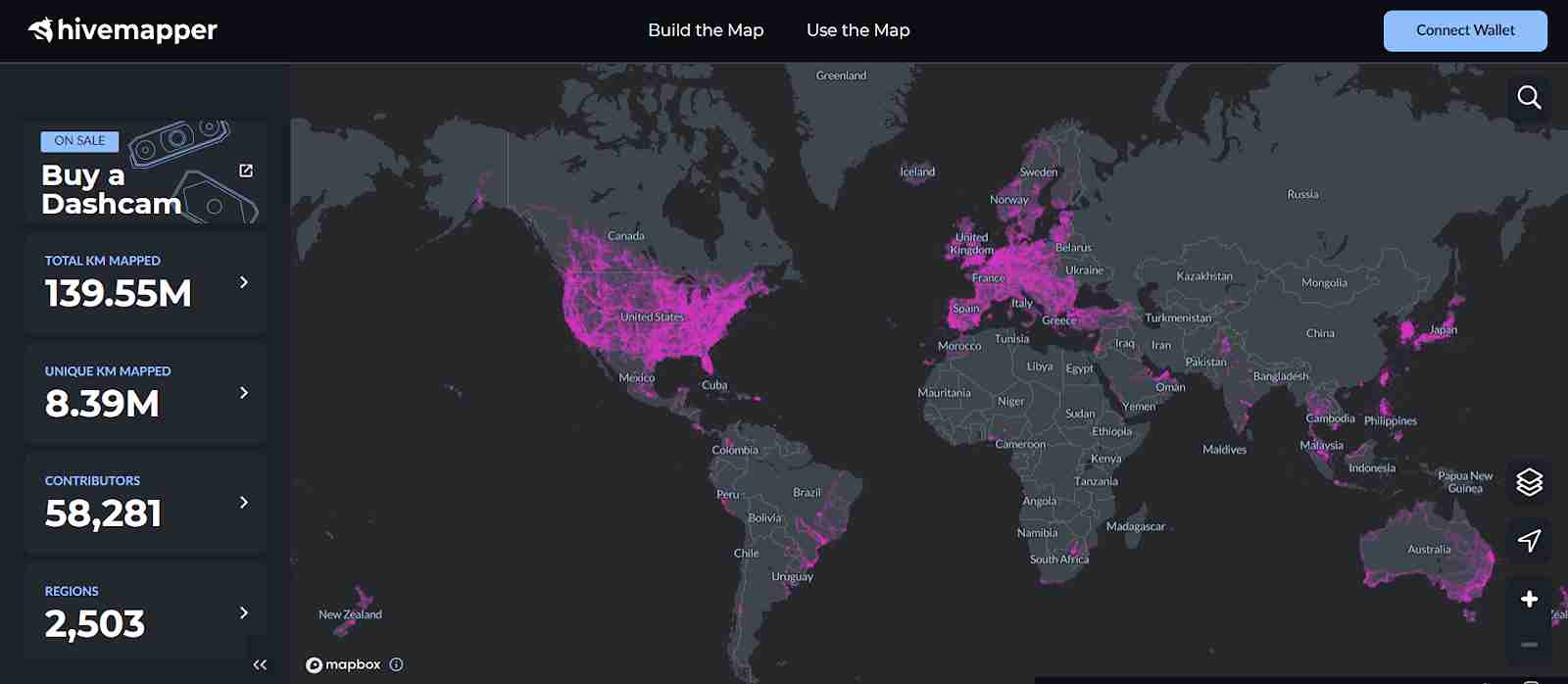
This vast pool of data is used to build up a decentralized map with an API interface for applications. The DePIN ecosystem comprises these following components to work:
Real-world Physical Infrastructure Network
These are tangible elements like Hivemapper’s dashcams as I mentioned above that collect data and contribute it to the DePIN network. Other examples may include solar panels for renewable energy generation or hotspots for wireless connectivity or servers for decentralized cloud-based services.
Blockchain Architecture
DePIN are decentralized blockchain based projects, which naturally makes this component a backbone of DePIN. Blockchain architecture forms the center of this token economy where each network interacts through a blockchain system with embedded smart contract logic that executes predetermined rules on token rewards (like Hivemapper’s HONEY tokens).
Off-Chain Computing Infrastructure
This serves as a bridge between the real physical world and blockchain. Let me walk you through oracles for example–the middleware entities connecting smart contracts to external data systems (off-chain information).
Ruitao Su, co-founder of Polkadot’s liquidity hub Acala Network explained the importance of oracles on the ZK Podcast stating, “When the Ethereum network is congested, oracle transactions are actually competing with all other transactions out there.
So what we do with Acala is, we think oracle transactions are very important. It should be prioritized and it shouldn’t be liable for typical gas costs, because the oracle providers are actually contributing to the network. We should be incentivizing and rewarding them instead of charging them gas fees.”
Decentralized Token Incentives
Hivemapper’s HONEY token incentives are central to this DePIN’s model as it rewards service providers incentivizing participation and growth.
Well now that we have established the components encompassing a typical DePIN project, don’t you think it is important to understand how a decentralized physical infrastructure ecosystem like Hivemapper ensures integrity and validity of data shared by people? Well, the concepts of blockchain help in establishing trustworthiness.
The extensive paper on ‘Generalised DePIN Protocol’ explains the primary process to run the DePIN from customer to end user with the help of this image below. It showcases the different stages involved from onboarding users, verifying those credentials of the users through Zero-Knowledge Proofs (ZKPs) and Multi-Party Computation (MPC) to staking and more.
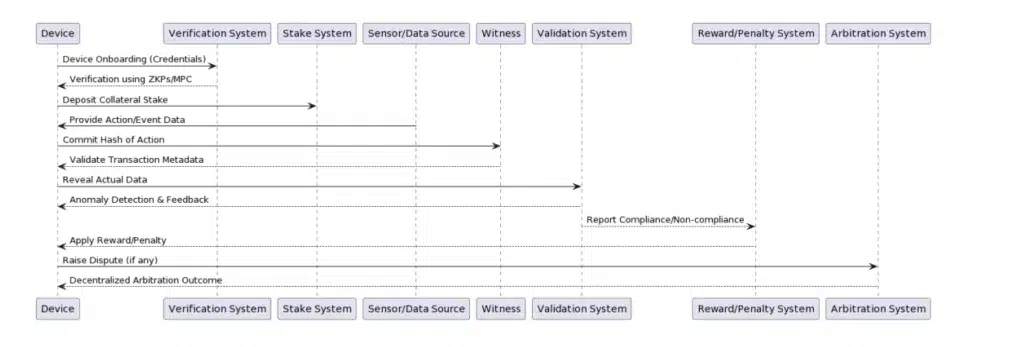
Bringing it home and continuing with the Hivemapper’s example, once the user is verified and authorized they can start contributing relevant live footage captured by their dashcams installed in their vehicles.
As we move on validators on the network provide validity to say the timestamp and source device. And, users who share have contributed valid data to the decentralized map are rewarded with HONEY tokens.
Categorization of Decentralized Infrastructure
An interestingly curious report by Messari categorizes DePIN projects in two ways depending on the hardware and resources, goods and services the network is offering.
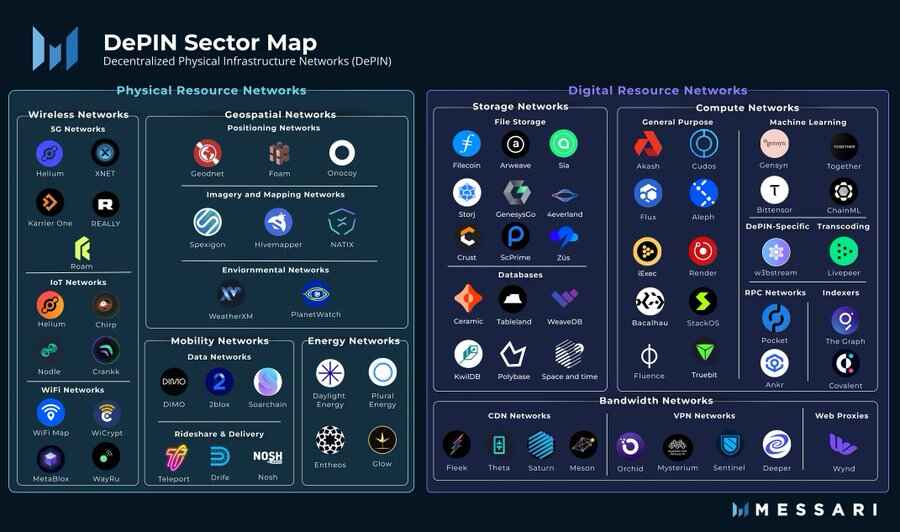
- First type of a DePIN are Physical Resource Networks (PRNs) that incentivize people to deploy and manage location-dependent hardware so the examples of PRNs include tangible resources like mobility (eg: peer-to-peer car sharing services), energy (eg: solar panels) and connectivity networks (eg: dApps collecting real-time data on traffic patterns).
- Another type of DePIN as specified by the report are Digital Resource Networks (DRNs) that incentivize people to direct or deploy hardware for offering interchangeable (fungible) digital resources. So you know some of the real-world example of DRNs may look like:
- Distributed cloud storage resources or
- Smart grids that optimize electricity or
- Using IoT devices for enhancing supply chain visibility in real-time.
We have explored the types of decentralized physical infrastructure networks. Now, let’s move on to answering the question of how DePIN is going to change the world, shall we?
How Does the Future of DePIN Provide Benefit to Us?
The best part about decentralized physical infrastructure networks is that it is the complete opposite of traditional infrastructure. We know that by now, but how does this benefit us at all?
Well, IoT applications in the current scenario are mainly centralized cloud-based infrastructures, fully managed by large organizations having user data lock-ins. This kind of an architecture naturally poses a lot of concerns ranging from security, privacy, identity and data ownership.
For this reason, building innovative and decentralized IoT applications in the blockchain and Web3 paradigm enable users to retain the control of identity and associated user data. But the future of DePIN is not just about the underlining blockchain technology though it’s about rethinking the possibilities of shared ownership.
Let’s look at the benefits of the decentralized physical infrastructure networks to know why would you and me bother flipping the traditional ways of doing things, yeah?
Scaling at a Fraction of Cost
DePIN onboards machines into Web3 by crowdsourcing physical infrastructure. Through this mechanism it can hyper-scale faster than traditional projects and get this–at a fraction of capital and operating cost. Curious how? It’s obvious isn’t it–by being distributed among the network contributors.
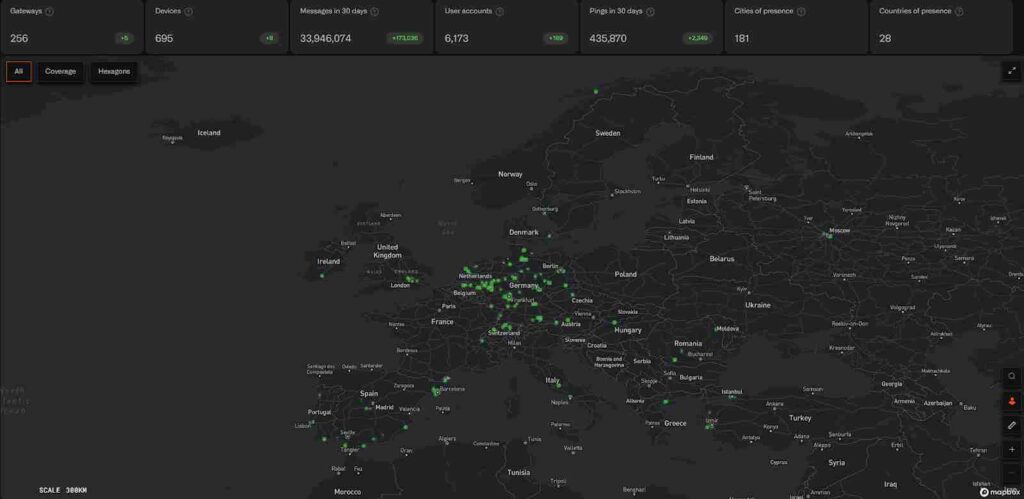
This is the reason that P2P GPU processing network projects like Render showcased that decentralized rendering is not just utilizing resources effectively but is also up to ten times cheaper than centralized alternatives. In the similar way DePIN can make the rapid deployment of networks possible at a pace that centralized telecom companies may only think of.
Community Driven Instead of Legacy Corporation
Decentralized mesh networking with the help of blockchain not only allows wider low cost Internet access because of the infrastructures built from routers contributed by owners like you and me, but it also ensures transparency, ownership and accountability for investments or any other economic compensations from sharing of network traffic services.
As per Messari, rather than focusing on quarterly reports and financial services like traditional corporations, DePIN blockchain projects aimed to create networks of physical hardware that could perform the functions of legacy businesses.
You know the best part though? DePIN encourages not only community involvement but also crowdsourcing. This can provide economic sustainability and matches stakeholder interests to promote adoption and growth.
For example, by using the “dynamic rewards” framework and rewarding the contributors based on geography, contributor productivity and quality, Hivemapper created two way benefits. How?
Hivemapper Cofounder Ariel Seidman explained that the framework worked by incentivizing contributions that improved the map quality while the contributors/stakeholders benefiting the network the most were incentivized at the same level. This created a win-win situation for both.
Decentralized Governance
DePIN offers a way to democratize access and participation in the digital economy. In contrast, traditional infrastructure companies have a centralized dictating authority as to what its users like you and me can do and use. Oh also the feature of decentralization helps DePIN minimize the risk of hacking, corruption and ensures network resilience.
For example, Uber has a record for data breaches. Let me make you imagine how a web3 Uber would look like. For once, a Web3 Uber will allow users to control what type of data they want to share. Decentralized governance means that all stakeholders (drivers, passengers, app developers and investors) literally everyone will have the ability to co-own, co-govern and co-earn on each level.
Conclusion
As per CoinGecko, the DePIN market cap is steadily rising. Also, Messari’s “State of DePIN 2023” report highlights that the DePIN ecosystem has grown to more than 650 projects which ultimately cover six sub sectors viz computing, artificial intelligence (AI), wireless, sensors, energy and services.
These mind-boggling statistics definitely indicate that there are quantitative as well as qualitative signs that the DePIN sector is in a period of incredible growth. It does also showcase that the sector is in the growth curve of expanding towards every little aspect of physical infrastructure which has the potential to be reformed in the form of decentralization.




